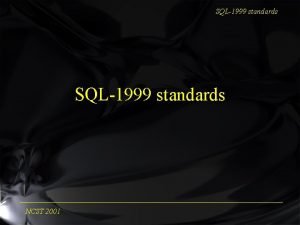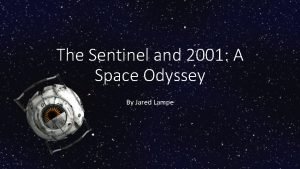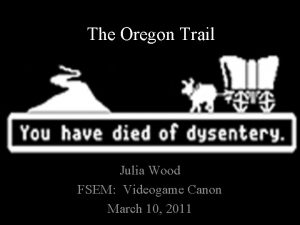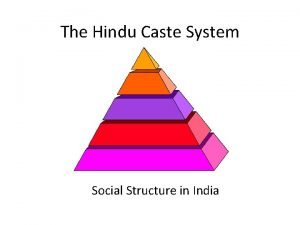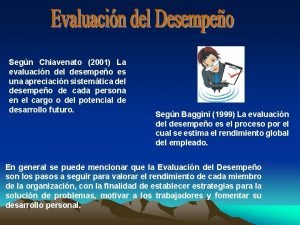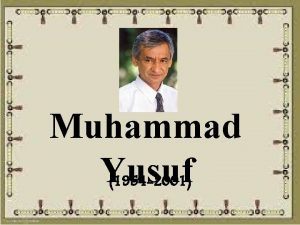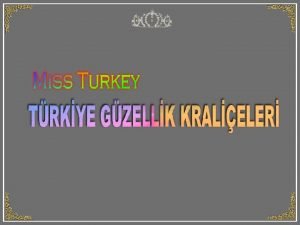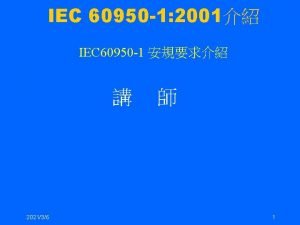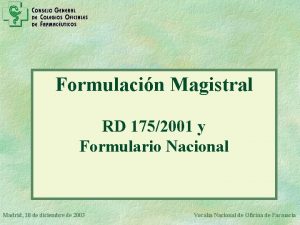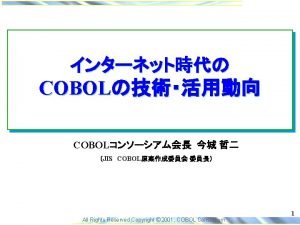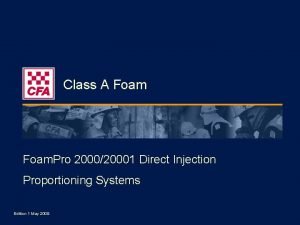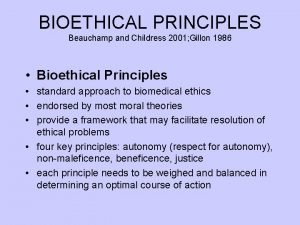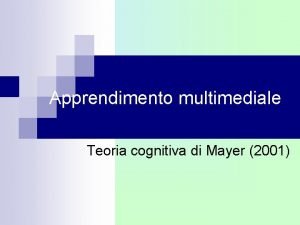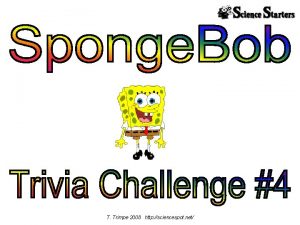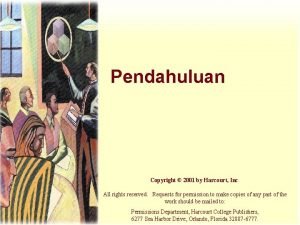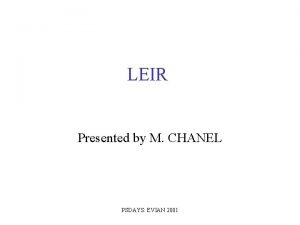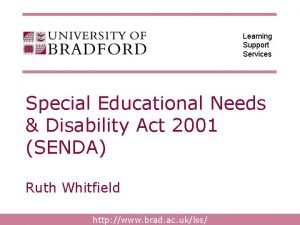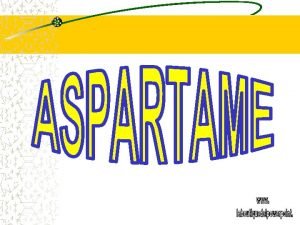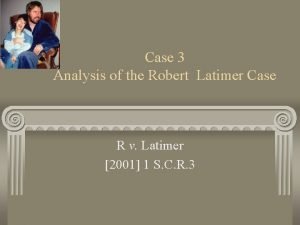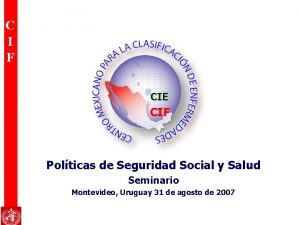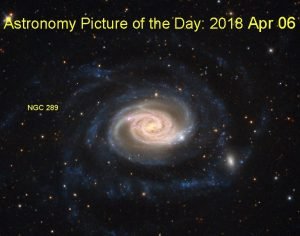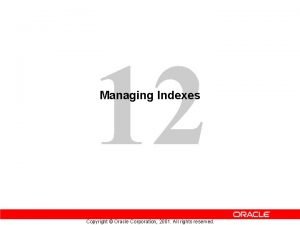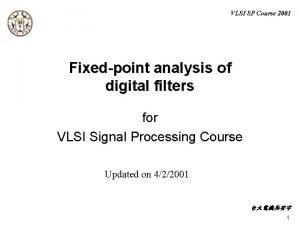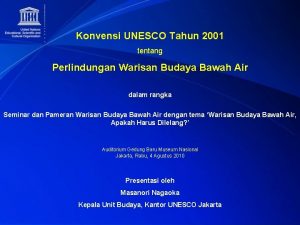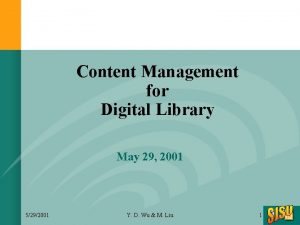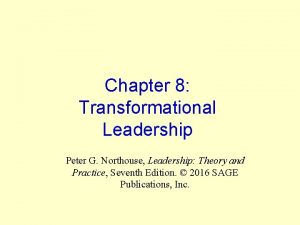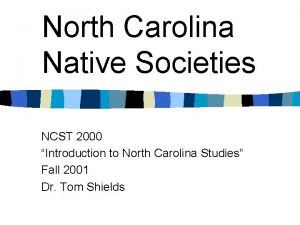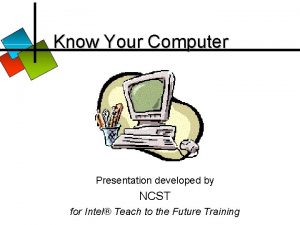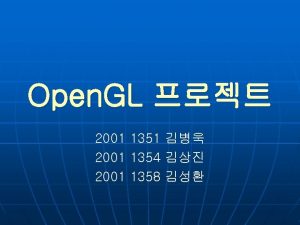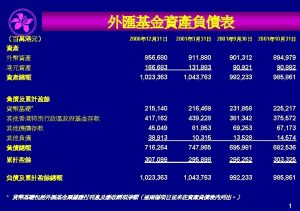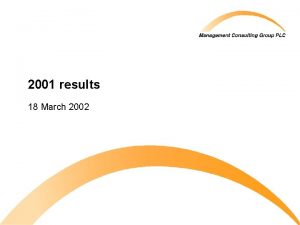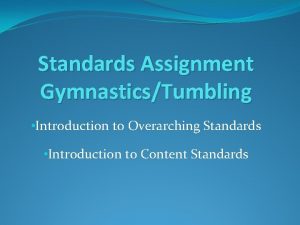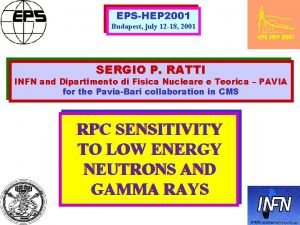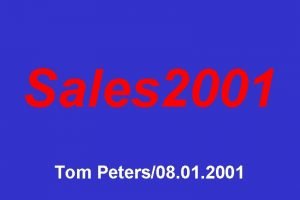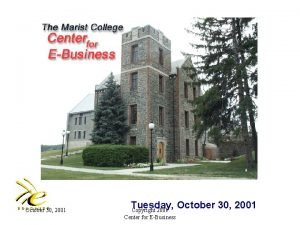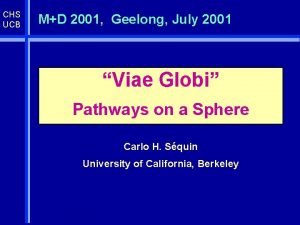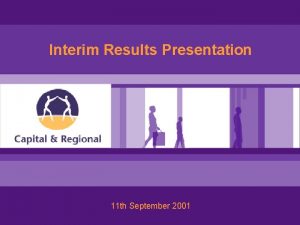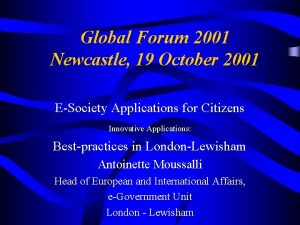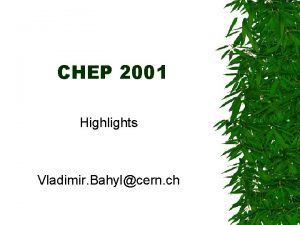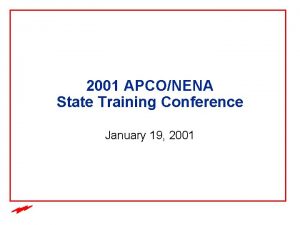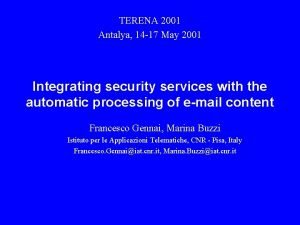SQL1999 standards NCST 2001 SQL1999 standards Introduction SQL1999



































![SQL-1999 standards SQL/PSM : SQL-server modules • CREATE MODULE modulename [options] routine-def; . . SQL-1999 standards SQL/PSM : SQL-server modules • CREATE MODULE modulename [options] routine-def; . .](https://slidetodoc.com/presentation_image_h/0491b92bb7e63fb27b87457fe68b9c57/image-36.jpg)













- Slides: 49

SQL-1999 standards NCST 2001

SQL-1999 standards Introduction : SQL-1999 • Previously known as SQL 3 standards – the third generation SQL. • Superset of SQL 92 – i. e maintaining the upward compatibility. – Significant enhancement over SQL 92 • Making SQL object oriented. • As well some other new features too. . . NCST 2001 2

SQL-1999 standards SQL 99 Overview • Object-Relational Extensions – – – • • User defined data types Reference types Collection types Large object supports Table hierarchies Triggers Stored Procedures and user defined functions Recursive queries OLAP extensions NCST 2001 3

SQL-1999 standards SQL 99 Overview • • SQL Procedural contsructs Update through unions and joins SQLJ and many other stuff. . NCST 2001 4

SQL-1999 standards • Is a multi-part standard – – – – Part 1: SQL/Framework Part 2: SQL/Foundation Part 3: SQL/CLI Part 4: SQL/PSM Part 5: SQL/Bindings Part 7: SQL/Temporal Part 9: SQL/MED (Management of External Data) Part 10: SQL/OLB (Object Language Bindings) NCST 2001 5

SQL-1999 standards SQL/Framework • Overview – Provides an overview of the complete standard – Defines how different parts fit together – Contains common specifications(e. g. definitions, concepts, conventions) • Conformance NCST 2001 6

SQL/Foundation SQL-1999 standards • The epicentre of the SQL 1999 standard. • Traditional SQL + Object Oriented SQL. • Traditional SQL includes – – – Data Types Predicates Semantics Security Active Database • SQL/Foundation adds on the object oriented flavour to tradtional SQL NCST 2001 7

SQL-1999 standards SQL: 1999 Data types NCST 2001 8

SQL-1999 standards Object-Relational extensions to SQL • User defined data types – ADTs – row objects – distinct types • Type constructors – row types – reference types • Collection types – sets , lists , multisets NCST 2001 9

SQL-1999 standards Object-Relational extensions to SQL • User defined methods, functions and procedures. • Typed tables and views – table hierarchies – view hierarchies NCST 2001 10

SQL-1999 standards User Defined Types (UDT) • aka Structured Types • Abstract data types(ADT’s), named row types, and distinct types • Used in the same way as built in data types. • For e. g – the column in the relational table may be defined as taking values of user defined types, as well as built in types. NCST 2001 11

distinct UDT SQL-1999 standards • Simplest form of user defined type in SQL 1999. • E. g. – CREATE DISTINCT TYPE us_dollar AS DECIMAL(9, 2) – CREATE DISTINCT TYPE canadian_dollar AS DECIMAL(9, 2) • Treating us_dollar and canadian_dollar as same will result in an error even though each type has same representation. (strong typing) Error SELECT …… WHERE CDN. TOTAL > USA. TOTAL Proper way SELECT …. WHERE CDN. TOTAL = CDN_DOLLAR(USA. TOTAL) NCST 2001 12

SQL-1999 standards User defined ADT’s • A abstract data type definition encapsulates attributes and operations in a single entity. • For e. g CREATE TYPE note ( sender char (20), receiver char(20), sdate, contents blob (1 M), function subject(note) returns varchar(256) ) NCST 2001 13

SQL-1999 standards Encapsulation • Access to ADT attributes is restricted to functions • no distinction between stored or virtual attribute • for every attribute, an observer and mutation function will be generated FUNCTION sender(note) returns char(20) FUNCTION sender(note, char(20)) returns note • physical representation of ADT can be changed without affecting any application NCST 2001 14

SQL-1999 standards ADT attributes • Have name and type • types of attributes can be pre defined or any other user defined type(distinct types, ADT) CREATE TYPE address( street char(30, city char(30), zip integer); CREATE DISTINCT TYPE bitmap AS BLOB; CREATE TYPE real_esate( rooms integer, size decimal(8, 2), location address, front-view-image bitmap); • Have optional defaults NCST 2001 15

SQL-1999 standards Creating instances of ADTs • Created by system supplied constructor function • generated automatically when ADT is defined • returns a new instance when attribute is initialized to its default value • signature: type_name() -> type_name NCST 2001 16

SQL-1999 standards Accessing attributes • Observer and mutation functions are used • automatically generated when ADT is defined • DOT notation -- syntactic sugar for invocation of functions BEGIN DECLARE r real_estate; SET r. . size = 2000. 00; set y = r. size ; set z = r. . location. . city; NCST 2001 /* same as size(r, 2000. 00) */ /* same as size ( r ) */ /* same as city(location ( r ) ) */ 17

SQL-1999 standards Defining visible interface • Public • private • protected CREATE type employee ( public name char(20), e_address, hiredate, private base_sal decimal(8, 2), private commision decimal(8, 2), public function salary ( p employee) returns decimal < code here > ); NCST 2001 18

Virtual attributes • SQL-1999 standards Do not have stored values • modeled with pair of user defined functions(visible) • CREATE type employee ( public name char(20), e_address, hiredate, private base_sal decimal(8, 2), private commision decimal(8, 2), public function salary ( p employee) returns decimal <code here> public function working_years( p employee) returns integer <observer func code here> public function working years (p employee, year integer) returns employee <mutator code here> NCST 2001 19

SQL-1999 standards Initializing instances of ADTs • ADT instance is generated by system defined constructor function • ADT instance is modified by mutator functions • user can define any number of ‘constructor’ functions with parameters to initialize attributes • CREATE FUNCTION real_estate( r integer, s decimal(8, 2)) RETURNS real_estate BEGIN DECLARE re real_estate; SET re = real_estate( ); SET re. . rooms = r; SET re. . size = s; END; NCST 2001 20

SQL-1999 standards Use of ADTs • ADTs can be used whenever other types can be used in SQL • type of attributes of other ADTs • type of parameters of functions and procedures • type of SQL variable • type of domain or columns in tables NCST 2001 21

SQL-1999 standards Inheritance • All attributes are inherited • name conflicts are resolved by function resolution • precedence is defined by the order of supertypes in the UNDER clause • Overloading • function resolution NCST 2001 22

SQL-1999 standards • ADTs can be subtype of one or more ADTs • ADTs inherit structure and behavior from their supertypes CREATE TYPE real_estate … CREATE TYPE condo UNDER real_estate. . . CREATE TYPE house UNDER real_estate. . . CREATE TYPE vila UNDER HOUSE … CREATE TYPE vacation_property UNDER real_estate. . . CREATE TYPE summer_lodge UNDER vacation_property, house … • Additional functions, attributes can be defined • Functions on supertypes can be overloaded • instance of subtype can be used in every context where supertype instance can be used NCST 2001 23

SQL-1999 standards Row Types • Create table employees ( name char(40), address row ( street char(30), city char(30), zip row ( base char(4), ext char(4)) ) ) NCST 2001 24

SQL-1999 standards Reference Types. . . • Create row type account_t( acctno int, cust ref (cust_t), type char(1), opened date, balance double precision); • create table account of account_t(primary key acctno , scope for cust is customer); • references can be scoped NCST 2001 25

SQL-1999 standards Type constructors • Create table employees ( id integer primary key, name varchar(30), address row ( street char(20), city char(2). . ), manager integer references employees, projects set(integers), children list(person), hobbies set( varchar (20)) ) NCST 2001 26

SQL-1999 standards Queries on collection types • Select name from employees e where ‘travel’ in (select * from table (e. hobbies) Tmp) and 5 > (select count(*) from table (e. children ) tmp 2) • instances of set, lists and multisets can be treated as tables for queries • final result of query is always a table NCST 2001 27

SQL-1999 standards Other new data types. . • Large Objects – Character Large Objects (CLOB) • for e. g. mahabharta CLOB(25 M) – Binary Large Objects (BLOB) • for e. g. Arjun_photo BLOB(1 M) – Can store data upto gigabytes. . . • only ‘=‘ and ‘<>’ predicates • No group by & order by • No distinct • No primary key or foreign key • ARRAY – Variable length arrays – for e. g. marks integer ARRAY [50] – no multidimensional arrays. NCST 2001 28

SQL-1999 standards Other new data types. . • BOOLEAN – Boolean literals • TRUE • FALSE • UNKNOWN – COL 1 AND (COL 2 OR NOT COL 3) IS NOT FALSE NCST 2001 29

SQL-1999 standards New Predicates • SIMILAR - UNIX like regular expression – More powerful than LIKE – for e. g. NAMES SIMILAR TO ‘(SQL-(86|89|92|99)) | (SQL(1|2|3))’ • DISTINCT - accounts for null values – differs from equality test. – (10, ‘abc’, null) = (10, ‘abc’, null) is UNKNOWN – (10, ‘abc’, null) IS DISTINCT FROM (10, ‘abc’, null) is FALSE NCST 2001 30

SQL-1999 standards New Semantics • • View updation Recursion Locators Savepoints NCST 2001 31

SQL-1999 standards New Security features - Roles • • • Privileges assigned to authorization IDs Privileges assigned to roles Roles assigned to authorization Ids Roles assigned to other roles Improves manageability of databases. NCST 2001 32

SQL-1999 standards Activate Database - Triggers • Database object tightly bound to the table. • Fires when certain even happens on table – Per statement or row activation – Before or after statement or row action CREATE TRIGGER upd_balance BEFORE INSERT ON aacount_history /* event */ REFERENCING NEW AS ta FOR EACH ROW WHEN (ta. TA_TYPE = ‘W’) / *condition */ UPDATE accounts SET balance = balance - ta. amount WHERE account_# = ta. account_#; /* action */ NCST 2001 33

SQL-1999 standards Uses of Triggers • • • Enforces the business rules Cross reference other tables Maintain summary, audit or mirror tables validate the input data External actions such as E-Mail notifications. NCST 2001 34

SQL-1999 standards SQL/PSM • PSM stands for Persistent Stored Modules • PSM 99 specified: – SQL-server modules – Procedural extensions NCST 2001 35
![SQL1999 standards SQLPSM SQLserver modules CREATE MODULE modulename options routinedef SQL-1999 standards SQL/PSM : SQL-server modules • CREATE MODULE modulename [options] routine-def; . .](https://slidetodoc.com/presentation_image_h/0491b92bb7e63fb27b87457fe68b9c57/image-36.jpg)
SQL-1999 standards SQL/PSM : SQL-server modules • CREATE MODULE modulename [options] routine-def; . . NCST 2001 36

SQL-1999 standards SQL/PSM : Procedural Extensions • • Compound Statement SQL variable declaration Assignment declaration CASE statement IF statement ITERATE and LEAVE statements LOOP, WHILE, REPEAT, and FOR statements. NCST 2001 37

SQL-1999 standards SQL/Bindings • Embedded SQL – ADA, C, COBOL, FORTRAN, PASCAL. . . • Dynamic SQL • Direct SQL NCST 2001 38

SQL-1999 standards Embedded SQL • An embedded host language program is transformed into the host language module and SQL module. Embedded SQL Processor Host language NCST 2001 SQL module 39

SQL-1999 standards Dynamic SQL • Needed when the tables, columns or predicates are not known when the application is written • Execute statement immediately (once) s = “INSERT INTO people VALUES(‘abc’, ’. . . ) EXEC SQL EXECUTE IMMEDIATE : s; • Execute statement more than once EXEC SQL PREPARE stmt FROM : s; EXEC SQL EXECUTE stmt; NCST 2001 40

SQL-1999 standards Dynamic SQL • Dynamic parameter makers – – – s- “INSERT INTO people VALUES(? , . . ) EXEC SQL PREPARE stmt FROM : s; lname=“James” fname=“Bond” EXEC SQL EXECUTE stmt USING : lname, : fname, . . . ; NCST 2001 41

SQL-1999 standards Direct SQL • Impelementation defined mechanism for executing direct SQL statements – In effect, prepared immediately before execution – Cannot issue dynamic SQL using direct SQL NCST 2001 42

SQL-1999 standards SQL/CLI • An alternative mechanism for invoking SQL from application programs – Similar to dynamic SQL • CLI does not require pre-compilation of the application programs • Based on – CLI from SQL Access Group (SAG) and X/Open – ODBC NCST 2001 43

SQL-1999 standards SQL/CLI • An alternative mechanism for invoking SQL from application programs – Similar to dynamic SQL • CLI does not require pre-compilation of the application programs • Based on – CLI from SQL Access Group (SAG) and X/Open – ODBC NCST 2001 44

SQL-1999 standards SQL/CLI Application CLI call handler Database Manager Database NCST 2001 45

SQL-1999 standards SQL/OLB • SQLJ – Part 0 • Embedded SQL in Java – Part I • Java static methods as SQL UDFs and stored procedures in SQL • Currently a working draft – Part 2 • Use of classes to define SQL types NCST 2001 46

SQL-1999 standards SQL/MED • Still undergoing revisions • Purpose is to tie SQL with the management of data outside of the database (such as files) – Adds new data type : datalink – Abstract LOB type: used to define routines that are allowed on a LOB. NCST 2001 47

SQL-1999 standards And on the way is SQL 4. . . . NCST 2001 48

SQL-1999 standards References • UNDERSTANDING THE NEW SQL: A COMPLETE GUIDE by Jim Melton • http: //www. cse. iitb. ernet. in: 8000/proxy/db/~db ms/Data/Papers-Other/SQL 1999/. . . THANK YOU. . . NCST 2001 49
 Ncst tables
Ncst tables 2001: űrodüsszeia the sentinel
2001: űrodüsszeia the sentinel The oregon trail (1985 video game)
The oregon trail (1985 video game) India powerful caste
India powerful caste Neural pruning ib psychology
Neural pruning ib psychology Stuff that happened in 2001
Stuff that happened in 2001 Chiavenato 2001
Chiavenato 2001 Imagem dupla interpretação
Imagem dupla interpretação Muhammad yusuf mehr qolur sheri
Muhammad yusuf mehr qolur sheri Ebru özmeriç
Ebru özmeriç Kasus manajemen laba pt kimia farma
Kasus manajemen laba pt kimia farma Iloosh
Iloosh Iec 60950
Iec 60950 Preparados oficinales formulario nacional
Preparados oficinales formulario nacional Gothenburg riots 2001
Gothenburg riots 2001 Nom 010 tur 2001
Nom 010 tur 2001 Copyright 2001
Copyright 2001 Foampro 2001
Foampro 2001 Beauchamp and childress 2001
Beauchamp and childress 2001 Mayer 2001
Mayer 2001 Ayon kay goodman ang pagbasa ay
Ayon kay goodman ang pagbasa ay Xxxxxx 17
Xxxxxx 17 Helilooja 1949-2001
Helilooja 1949-2001 Destination imagination 2001
Destination imagination 2001 Sciencespot
Sciencespot There was nothing leon the driver could do
There was nothing leon the driver could do Samsung organization
Samsung organization Ruth bruno
Ruth bruno Copyright 2001
Copyright 2001 Apa itu need for achievement
Apa itu need for achievement Psdays
Psdays Special educational needs and disability act 2001
Special educational needs and disability act 2001 2001 july 15
2001 july 15 Dlgs 68/2001 poteri gdf
Dlgs 68/2001 poteri gdf A mi hermana (2001)
A mi hermana (2001) Copyright 2001
Copyright 2001 R v latimer summary
R v latimer summary Factores que conforman el modelo interactivo de la cif 2001
Factores que conforman el modelo interactivo de la cif 2001 Astronomy picture of the day 17 april 2001
Astronomy picture of the day 17 april 2001 2001
2001 2001 course
2001 course Materi angka indeks
Materi angka indeks 2001 course
2001 course Uday pareek scale
Uday pareek scale Konvensi unesco 2001
Konvensi unesco 2001 Destination imagination 2001
Destination imagination 2001 2001
2001 Nccpl
Nccpl Transformational leadership northouse
Transformational leadership northouse Con games 2001
Con games 2001
